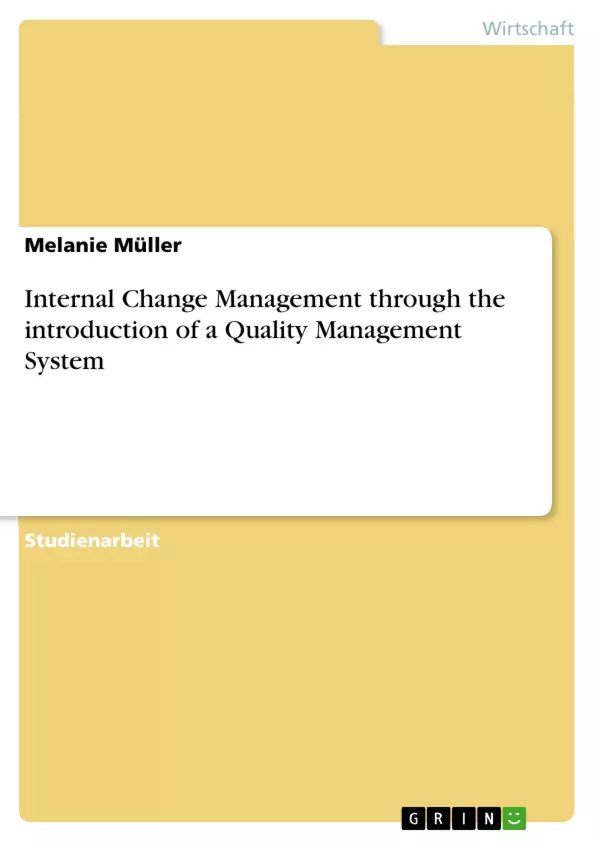Nothing is as constant as change. Companies are influenced by a variety of factors which made changes necessary. The cause of changes could be internal or external. External factors could be a change of business partners, an economic crisis, the globalisation or a change in laws.
In this case the change was internal. The whole company was unorganised, for example without any overview of current figures of incoming labour of the day, any written work instruction, how the tasks has to be done, or an overview of complaints from customers. The employees had no targets to achieve or some instruction how much work they have to do at one day. So everybody can work how he likes and as much as he likes.
The management decided to introduce a Qualtity Management System in a part of the company to get an ISO certification. With an ISO certification it would be possible to get more orders from other business sectors, because the certification stands for trust and reliability. To enable the certification, it was necessary to change the whole working situation of the company. For example processes, work instructions, forms, organisational charts, a Quality Management Manual, an internal error management and a complaints management were needed. Furthermore a system for the different work, which is done at that day, was needed to plan a strategic future. Through a quality management system, the company has to establish a vision. It contains targets for the company. From these targets the process key data for processes were derived. These process key data become the targets of the employees. The following graphic summarizes the whole situation on the basis of a before and after analysis:
Inhaltsverzeichnis
- 1 Starting situation
- 2 Analysis of the Situation
- 3 Discussion of Suggestions/Solutions for the Case
Zielsetzung und Themenschwerpunkte
Diese Fallstudie untersucht die interne Einführung eines Qualitätsmanagementsystems (QMS) in einem Unternehmen, das mit organisatorischen Herausforderungen kämpfte. Der Fokus liegt auf der Analyse der Ausgangssituation, der Identifizierung von Problemen und der Entwicklung von Lösungsansätzen zur Verbesserung der Organisation und Effizienz des Unternehmens.
- Die Herausforderungen einer chaotischen Unternehmenskultur
- Die Einführung eines QMS als Instrument zur Steigerung der Effizienz und Organisation
- Die Auswirkungen von Veränderungen auf das Verhalten der Mitarbeiter
- Die Notwendigkeit einer klaren Vision und Zielsetzung
- Die Entwicklung von Prozessabläufen und -richtlinien
Zusammenfassung der Kapitel
1 Starting situation
Das erste Kapitel beschreibt die Ausgangssituation des Unternehmens. Es wird deutlich, dass das Unternehmen unter mangelnder Organisation und unklaren Arbeitsabläufen leidet. Die Mitarbeiter arbeiten ohne feste Ziele und Richtlinien, was zu Ineffizienz und Chaos führt.
2 Analysis of the Situation
Das zweite Kapitel analysiert die Ursachen für die Probleme des Unternehmens. Es werden interne und externe Faktoren identifiziert, die die Notwendigkeit für Veränderung hervorrufen. Die Analyse zeigt die Bedeutung einer klaren Vision, von definierten Prozessen und der Notwendigkeit, die Mitarbeiter aktiv in den Veränderungsprozess einzubeziehen.
Schlüsselwörter
Qualitätsmanagement, ISO-Zertifizierung, Organisationsentwicklung, Change Management, Prozessoptimierung, Mitarbeitermotivation, Vision, Zielsetzung, Organisationsstruktur, Arbeitsabläufe, Richtlinien, Fehlermanagement, Beschwerdemanagement.
- Arbeit zitieren
- Melanie Müller (Autor:in), 2011, Internal Change Management through the introduction of a Quality Management System , München, GRIN Verlag, https://www.grin.com/document/189178



